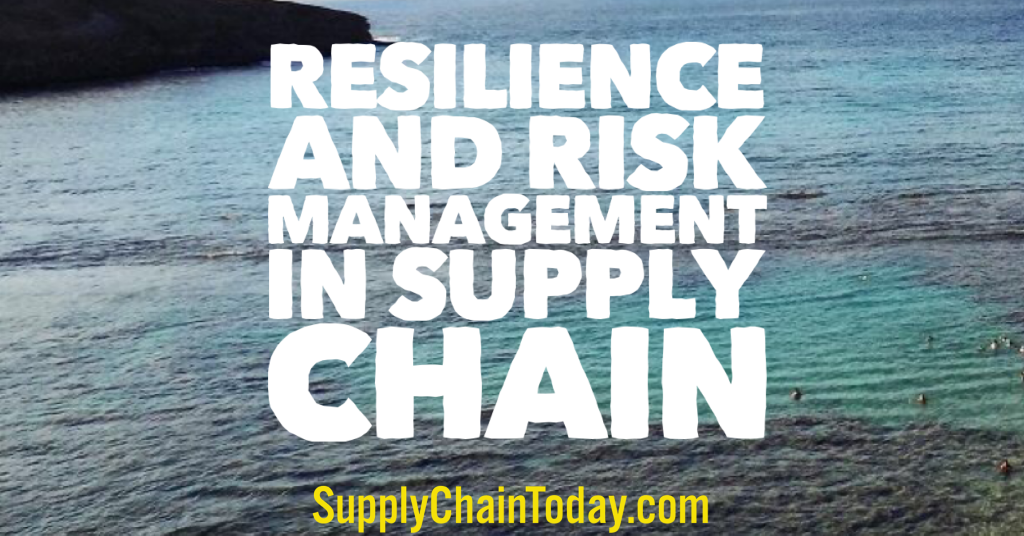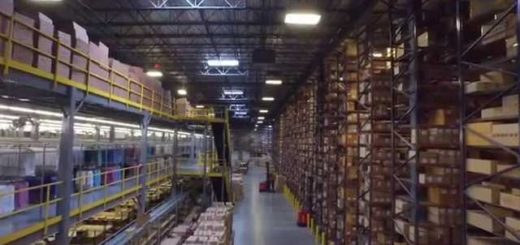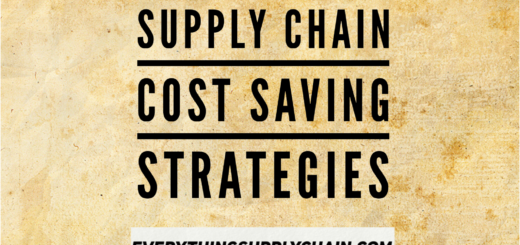Resilience and Risk Management in Supply Chain.
Introduction
“Managing Risk for a Resilient Supply Chain: Adapting to Change and Overcoming Challenges.” Resilience and risk management in supply chain is an important topic for businesses today. With the increasing complexity of global supply chains, companies must be able to anticipate and respond to disruptions in order to remain competitive. Resilience and risk management strategies help companies identify and mitigate potential risks, while also ensuring that their supply chain is able to quickly recover from any disruptions. By understanding the risks associated with their supply chain, companies can develop strategies to reduce the impact of disruptions and ensure that their supply chain remains resilient.
How to Develop a Risk Management Plan for Your Supply Chain
Risk management is an essential part of any successful supply chain. A risk management plan helps to identify, assess, and mitigate risks that could potentially disrupt the supply chain. Developing a risk management plan for your supply chain requires careful consideration of the potential risks and the steps needed to mitigate them.
Step 1: Identify Potential Risks
The first step in developing a risk management plan is to identify potential risks. This includes both internal and external risks. Internal risks are those that are within the control of the organization, such as changes in personnel or processes. External risks are those that are outside of the organization’s control, such as natural disasters or changes in the market. It is important to consider both types of risks when developing a risk management plan.
Step 2: Assess the Risks
Once potential risks have been identified, the next step is to assess the risks. This involves evaluating the likelihood of the risk occurring and the potential impact it could have on the supply chain. This assessment should be done for each identified risk and should be based on data and research.
Step 3: Develop Mitigation Strategies
Once the risks have been identified and assessed, the next step is to develop mitigation strategies. This involves creating plans to reduce the likelihood of the risk occurring and to minimize the impact if it does occur. These strategies should be tailored to the specific risks identified and should be based on the assessment of the risks.
Step 4: Monitor and Review
The final step in developing a risk management plan is to monitor and review the plan. This involves regularly assessing the risks and the mitigation strategies to ensure they are still effective. It is also important to review the plan periodically to ensure it is up to date and relevant.
By following these steps, organizations can develop a comprehensive risk management plan for their supply chain. This plan will help to identify, assess, and mitigate risks that could potentially disrupt the supply chain. It is important to remember that risk management is an ongoing process and the plan should be regularly monitored and reviewed.
The Benefits of Resilience in Supply Chain Management
Resilience is an important concept in supply chain management, as it enables organizations to respond quickly and effectively to disruptions in the supply chain. Resilience is the ability to anticipate, prepare for, and respond to disruptions in the supply chain. It is a key factor in ensuring that supply chains remain efficient and effective.
The benefits of resilience in supply chain management are numerous. First, it helps organizations to reduce the risk of supply chain disruptions. By anticipating and preparing for potential disruptions, organizations can minimize the impact of these disruptions on their operations. This can help to reduce costs associated with supply chain disruptions, such as lost sales, increased inventory costs, and delays in production.
Second, resilience helps organizations to maintain customer satisfaction. By responding quickly and effectively to disruptions, organizations can ensure that customers receive the products and services they need in a timely manner. This can help to maintain customer loyalty and trust, which is essential for long-term success.
Third, resilience helps organizations to remain competitive. By responding quickly and effectively to disruptions, organizations can ensure that their supply chains remain efficient and effective. This can help them to remain competitive in the marketplace, as they can provide customers with the products and services they need in a timely manner.
Finally, resilience helps organizations to remain agile. By anticipating and preparing for potential disruptions, organizations can ensure that they are able to quickly and effectively respond to changes in the marketplace. This can help them to remain competitive and to quickly adapt to changing customer needs.
In conclusion, resilience is an important concept in supply chain management. It helps organizations to reduce the risk of supply chain disruptions, maintain customer satisfaction, remain competitive, and remain agile. By utilizing resilience in their supply chain management strategies, organizations can ensure that their supply chains remain efficient and effective.
Strategies for Mitigating Supply Chain Risk
Supply chain risk is a major concern for businesses of all sizes. It can lead to delays, cost overruns, and other disruptions that can have a significant impact on a company’s bottom line. Fortunately, there are a number of strategies that can be employed to mitigate supply chain risk.
1. Diversify Suppliers: Having multiple suppliers for the same product or service can help to reduce the risk of disruption due to a single supplier. This can be especially important for critical components or services.
2. Establish Contingency Plans: Having a plan in place to address potential disruptions can help to minimize the impact of any supply chain issues. This can include having alternative suppliers, alternative transportation methods, or alternative production methods.
3. Monitor Suppliers: Regularly monitoring suppliers can help to identify potential issues before they become a problem. This can include monitoring supplier performance, financial stability, and compliance with regulations.
4. Utilize Technology: Technology can be used to monitor and manage the supply chain more effectively. This can include using software to track shipments, monitor supplier performance, and identify potential issues.
5. Improve Communication: Improving communication between suppliers and customers can help to identify potential issues before they become a problem. This can include having regular meetings, using collaborative tools, and establishing clear communication protocols.
By employing these strategies, businesses can reduce the risk of supply chain disruptions and ensure that their operations remain efficient and profitable.
The Role of Technology in Enhancing Supply Chain Resilience
Supply chain resilience is a critical factor in the success of any business. It is the ability of a business to respond to disruptions and maintain operations in the face of unexpected events. Technology plays an important role in enhancing supply chain resilience.
Technology can be used to improve visibility and traceability throughout the supply chain. This allows businesses to quickly identify and respond to disruptions. For example, advanced tracking systems can be used to monitor the movement of goods and materials, allowing businesses to quickly identify and address any delays or issues.
Technology can also be used to improve communication and collaboration between supply chain partners. This allows businesses to quickly share information and coordinate responses to disruptions. For example, cloud-based collaboration tools can be used to share data and documents in real-time, allowing businesses to quickly respond to changes in demand or supply.
Technology can also be used to automate processes and reduce manual labor. This can help businesses reduce costs and improve efficiency. Automation can also help businesses reduce the risk of human error, which can lead to costly delays and disruptions.
Finally, technology can be used to improve forecasting and planning. This allows businesses to anticipate potential disruptions and plan accordingly. For example, predictive analytics can be used to identify potential risks and develop strategies to mitigate them.
In conclusion, technology plays an important role in enhancing supply chain resilience. By improving visibility, communication, collaboration, automation, and forecasting, businesses can better prepare for and respond to disruptions. This can help businesses maintain operations and remain competitive in the face of unexpected events.
The Impact of Globalization on Supply Chain Risk Management
Globalization has had a profound impact on supply chain risk management. As the world has become increasingly interconnected, businesses have had to adapt their supply chain risk management strategies to account for the increased complexity of global supply chains.
The most significant impact of globalization on supply chain risk management is the increased complexity of global supply chains. Global supply chains are often composed of multiple tiers of suppliers, each of which may be located in different countries and regions. This increased complexity can make it difficult to identify and manage potential risks. Additionally, global supply chains often involve multiple currencies, languages, and cultures, which can further complicate risk management efforts.
Another impact of globalization on supply chain risk management is the increased speed of global supply chains. As businesses have become more interconnected, the speed of global supply chains has increased significantly. This increased speed can make it difficult to identify and manage potential risks in a timely manner. Additionally, the increased speed of global supply chains can make it difficult to respond quickly to unexpected events or disruptions.
Finally, globalization has also had an impact on the types of risks that businesses must manage. As businesses have become more interconnected, the potential for supply chain disruptions due to political, economic, or environmental events has increased significantly. Additionally, businesses must now consider the potential for cyber-attacks, data breaches, and other digital risks.
In conclusion, globalization has had a significant impact on supply chain risk management. Global supply chains are more complex, faster, and more vulnerable to a variety of risks. As a result, businesses must adapt their risk management strategies to account for the increased complexity and speed of global supply chains, as well as the potential for new types of risks.
Best Practices for Building a Resilient Supply Chain
Building a resilient supply chain is essential for any business that wants to remain competitive in today’s global economy. A resilient supply chain is one that is able to quickly and effectively respond to disruptions, such as natural disasters, political unrest, or economic downturns. Here are some best practices for building a resilient supply chain:
1. Develop a Risk Management Plan: A risk management plan should be developed to identify potential risks and develop strategies to mitigate them. This plan should include a risk assessment of suppliers, transportation networks, and other areas of the supply chain.
2. Diversify Suppliers: Having multiple suppliers for the same product or service can help reduce the risk of supply chain disruptions. This will also help to ensure that the business has access to the best quality products and services at the best prices.
3. Utilize Technology: Technology can be used to improve supply chain visibility and efficiency. This includes using software to track inventory levels, monitor supplier performance, and automate processes.
4. Establish Contingency Plans: Contingency plans should be established to ensure that the business is prepared for any potential disruptions. This includes having alternative suppliers, transportation routes, and storage facilities.
5. Monitor the Supply Chain: Regularly monitoring the supply chain can help identify potential risks and allow the business to take proactive steps to mitigate them. This includes monitoring supplier performance, inventory levels, and transportation networks.
By following these best practices, businesses can build a resilient supply chain that is able to quickly and effectively respond to disruptions. This will help ensure that the business remains competitive in today’s global economy.
Conclusion
In conclusion, resilience and risk management in supply chain are essential for businesses to remain competitive and successful. By understanding the risks associated with supply chain operations, businesses can develop strategies to mitigate those risks and ensure that their supply chain remains resilient. By implementing effective risk management strategies, businesses can reduce the likelihood of supply chain disruptions and ensure that their supply chain remains resilient and efficient. Additionally, businesses should strive to build strong relationships with their suppliers and customers to ensure that their supply chain remains resilient and reliable.
Supply Chain Resources
- Automation Quotes by Top Minds.
- Avoiding Disruptions in Your Supply Chain.
- Bullwhip Effect: How Sudden Demand Increases Affect Supply Chains.
- End To End Supply Chain Management Process.
- From Pandemic Disruption to Global Supply Chain Recovery.
- Guide to Supplier Management.
- How Will Emerging Technologies Improve Supply Chain?
- Implementation Guide to Develop a Resilient Supply Chain.
- SCM Collaboration Resources on Social Media.
- Supply Chain Today.
- Supply Chain Risk Management (SCRM) Videos and Training.
- Worst Supply Chain Disruptions in Modern USA History.









































